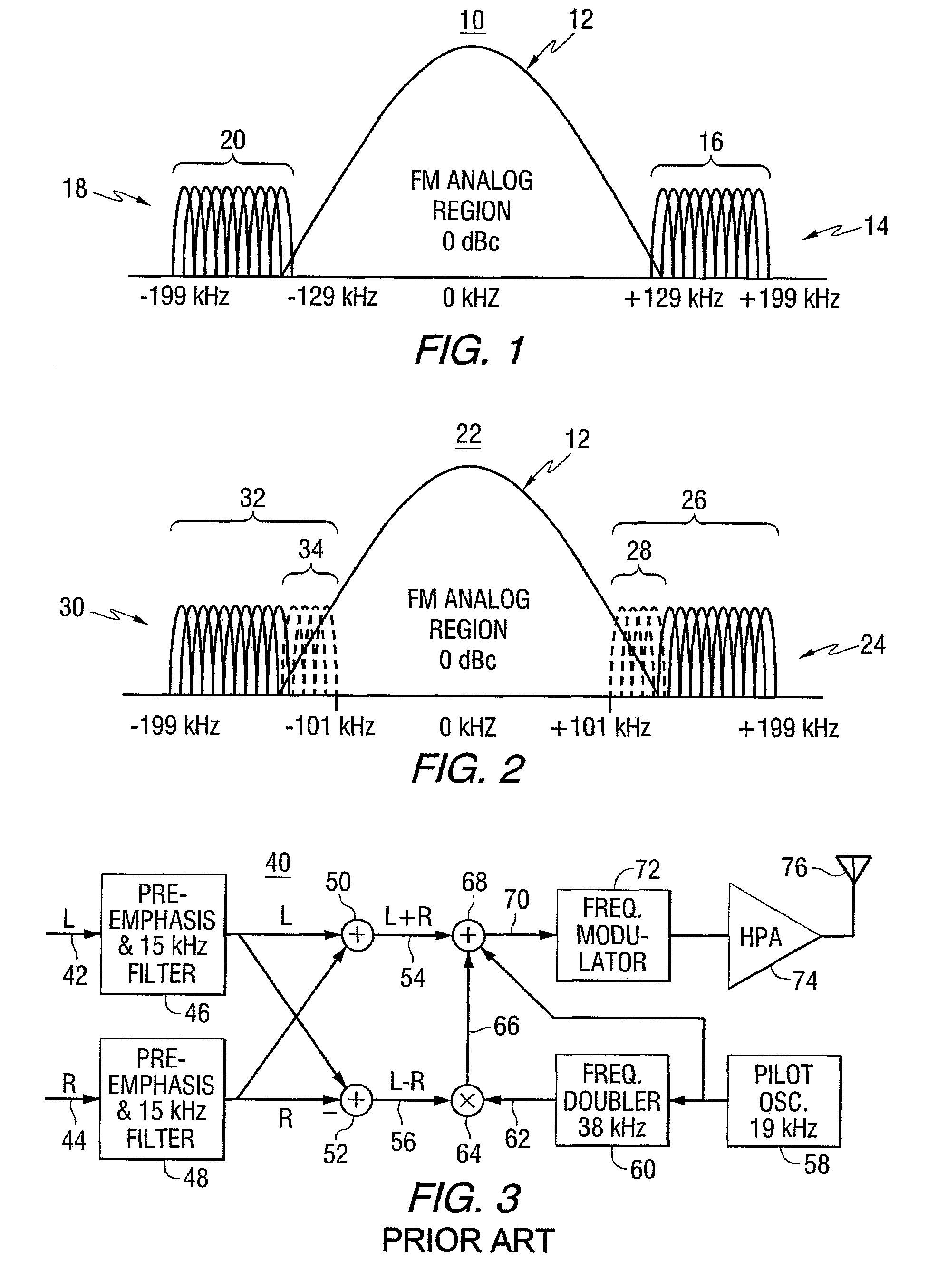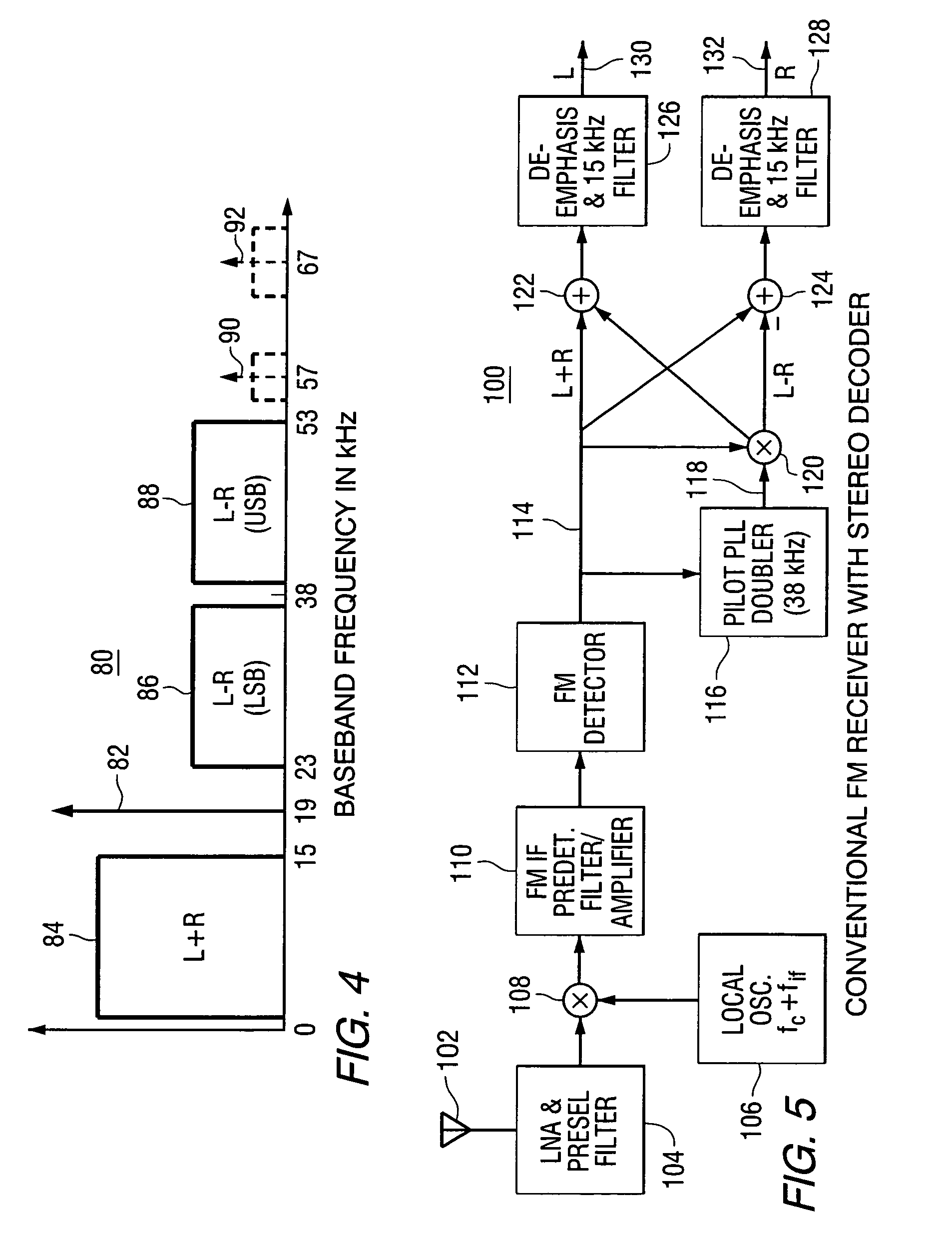Bandwidth reduction of an FM broadcast signal using a baseband precompensation technique
a precompensation technique and fm radio technology, applied in the field of fm radio broadcasting, can solve problems affecting the utility of this portion of the spectrum, and achieve the effect of reducing or eliminating distortion
- Summary
- Abstract
- Description
- Claims
- Application Information
AI Technical Summary
Benefits of technology
Problems solved by technology
Method used
Image
Examples
Embodiment Construction
[0020]This invention provides a method for reducing the FM analog signal power in the region from 101 to 129 kHz from the center frequency of an FM hybrid IBOC signal. The method modifies the baseband multiplex signal in such a manner that it is compatible with constant-envelope high power amplifiers (HPAs) while limiting or eliminating any resulting additional distortion to the demodulated audio in a receiver. The invention improves the compatibility by reducing the FM analog signal power in the extended region of the IBOC signal sidebands.
[0021]To describe the invention it is instructive to first describe the frequency channel spectra of the FM Hybrid IBOC signal to identify the issues encountered with the extended subcarriers.
[0022]A spectral plot of the basic (Mode MP1) FM Hybrid IBOC signal 10 is illustrated in FIG. 1. The signal includes an analog modulated carrier signal 12, a first plurality of subcarriers 14 modulated by a digital signal and located in an upper sideband 16,...
PUM
 Login to View More
Login to View More Abstract
Description
Claims
Application Information
 Login to View More
Login to View More - R&D
- Intellectual Property
- Life Sciences
- Materials
- Tech Scout
- Unparalleled Data Quality
- Higher Quality Content
- 60% Fewer Hallucinations
Browse by: Latest US Patents, China's latest patents, Technical Efficacy Thesaurus, Application Domain, Technology Topic, Popular Technical Reports.
© 2025 PatSnap. All rights reserved.Legal|Privacy policy|Modern Slavery Act Transparency Statement|Sitemap|About US| Contact US: help@patsnap.com



